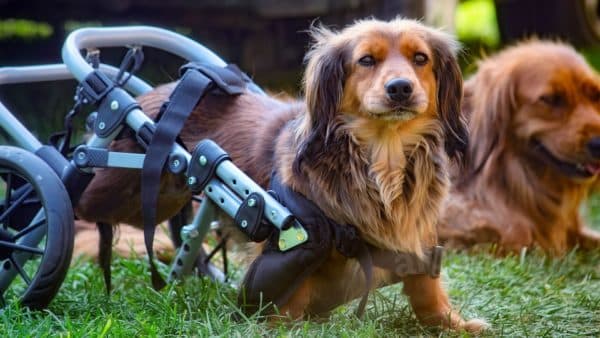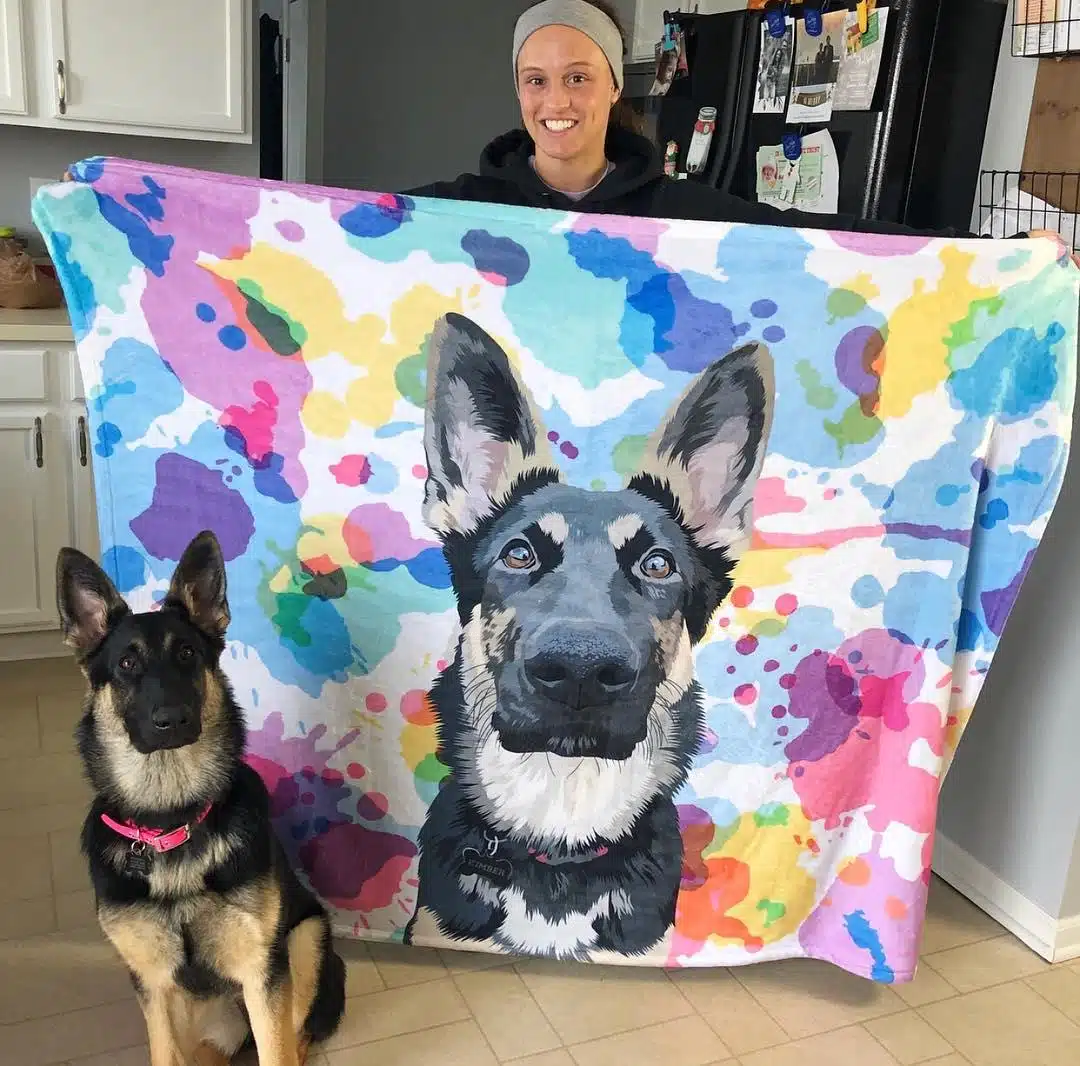Your Dog’s Spinal Health
Does Your Dog Have Intervertebral Disc Disease or Degenerative Myelopathy (DM)? When it comes to your dog’s spinal health, knowledge is absolutely a necessity. Being aware of the risks will help in identifying issues when they surface and alerting the veterinarian early enough for treatment.
One of the most devastating health conditions for dogs is back problems. Intervertebral Disc Disease (IVDD) is the number one health issue for small dogs. However, there is another condition that is often mistaken with IVDD. That condition is Degenerative Myelopathy (DM).
Keep in mind, big dogs also suffer from spine injuries such as IVDD and DM. So, how can you tell if your dog has IVDD or DM? Below is a comparison of the two health conditions.
| Category | Degenerative Myelopathy (DM) | Intervertebral Disc Disease (IVDD) |
| The usual age of onset | 8-12 years | 2-8 years |
| MRI | Normal | Shows disk damage |
| DM DNA test | DM DNA test | Maybe a clear, carrier, or at risk. |
| Initial signs | Dog loses the ability to sense movement or body position, feet slipping, dragging, or crossing, loss of muscle in back legs | Can be sudden, acute, complete paralysis. Can also have symptoms like those of DM. Rear feet may knuckle over, the dog may lose “quick reflex” in back feet (slow or not able to right foot). |
| Pain | None from DM | Mild to the extreme; no deep pain occurs only with complete paralysis. |
| Improvement | None: progresses until the dog is completely paralyzed and body systems shut down. | Improvement may occur with surgery or rest, medications, rehab. |
| Treatment | Physical therapy may help slow progression, supplements are sometimes recommended, no cure. Assistive devices and carts will be needed, the dog will need help with toileting and preventing bedsores. | Surgery or crate rest combined with physical therapy, NSAIDS, or steroids. |
Is Degenerative Myelopathy (DM) Preventable?
There is no way to prevent Degenerative Myelopathy in dogs except through selective breeding. Request to see the pup’s SOD-1 gene mutation testing results. They should come back normal. Breeds at risk for DM include:
IVDD Survivor Story – Hannah & Louis
- American Eskimo Dogs
- Bernese Mountain Dogs
- Borzoi
- Boxers
- Cardigan Welsh Corgis
- Chesapeake Bay Retrievers
- German Shepherd Dogs
- Golden Retrievers
- Great Pyrenees
- Kerry Blue Terriers
- Pembroke Welsh Corgis
- Poodles
- Pugs
- Rhodesian Ridgebacks
- Shetland Sheepdogs
- Soft Coated Wheaten Terriers
- Wire Fox Terriers
Is Intervertebral Disc Disease (IVDD) Preventable?
There is no way to prevent IVDD, but you can lower the risks for your four-legged buddy by having them use a dog ramp. Dog ramps ease the pressure small dogs put on their spines when they are jumping onto furniture or running up and down the stairs.
Small dogs are prone to IVDD, and Dachshunds, in particular, have the highest rate of IVDD. Their elongated spines and short legs force more pressure on their spines. While dog ramps can be expensive, it is well worth the money spent. A dog suffering from IVDD is not only heartbreaking but can be fatal as well. Some breeds at risk for IVDD include:
- Dachshunds
- German Shepherds
- Labrador Retrievers
- Rottweilers
- Dalmatians
- Doberman Pinschers
Final Thoughts
IVDD and DM are debilitating conditions. Not only will your dog suffer, but so will your bank account. Vet bills for checkups and surgeries can be very costly. The best solution is taking preventative steps and maintaining your dog’s overall health.
If you think your dog is suffering from a back issue, take them to the vet immediately. The sooner they are seen, the quicker they will get the care needed to get back on their fur feet.
80% of Dogs Develop Arthritis or Joint Pain by 7 Years old – Here’s How to Protect Them
Most of us train our dogs when they are puppies to jump up on furniture. We think it’s harmless (and easier than always lifting them), but for dogs, couches and beds are very high compared to the size of their bodies.
Every time they jump it compresses their back and applies enormous force to their joints.
It’s no wonder that an incredible 80% of dogs experience arthritis or joint pain by only 7 years old.
Luckily, there is a vet-recommended solution.
It’s the PawRamp by Alpha Paw. An adjustable ramp that allows dogs to safely get on and off couches and beds. PawRamp makes joining you in bed or on the couch effortless and fun.
As a bonus, you can use code SAVE35 to get $35 off the PawRamp today.













